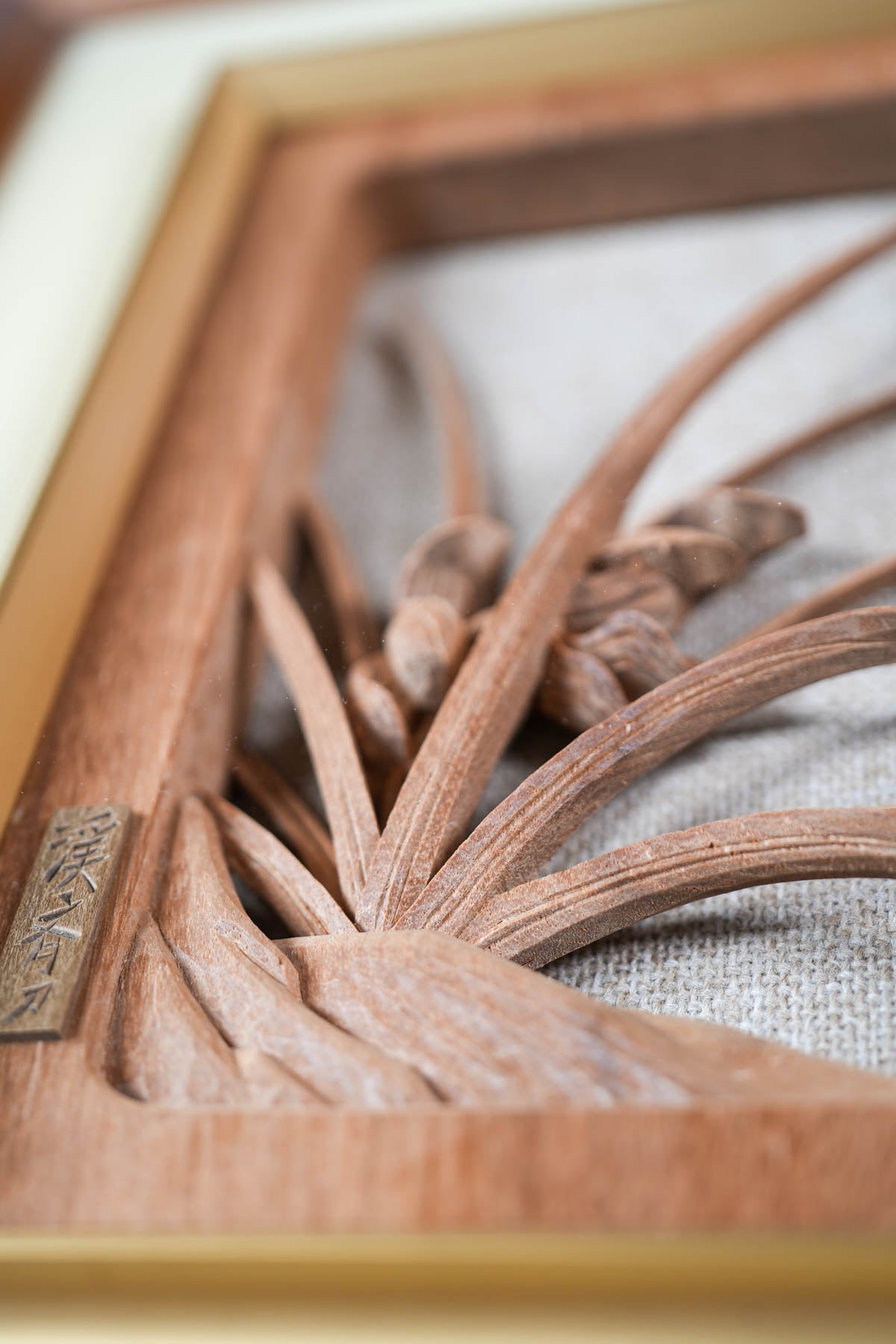Silk Crane
Home Decor Framed Art 3D Wood Carving Sculpture Wall Art Decor - Japanese Handcrafted Art
Home Decor Framed Art 3D Wood Carving Sculpture Wall Art Decor - Japanese Handcrafted Art
Couldn't load pickup availability
Home Decor Framed 3D Inami Wood Carving Sculpture Wall Art Decor - Japan's Heritage Craftsmanship for Living Spaces.
Explore the timeless beauty of Inami Carving by Japanese Artisan, Hitoshi Tani(渓斉), a stunning piece from Nanto City, Toyama Prefecture in Japan. This framed Japanese wood carving art features delicate depictions of Japanese Lilly flower, showcasing the exquisite craftsmanship of Japanese traditional arts. Make your interior with this unique masterpiece that seamlessly blends tradition and modern aesthetics. Perfect for art enthusiasts and those seeking to add a touch of Japanese elegance to their decor. Discover the allure of Inami Carving, a true representation of artistic Japan's heritage in every intricately carved detail.
About Inami Carving: Elevating Japanese Craftsmanship
Experience the epitome of carving excellence with "Inami Carving," a traditional craft celebrated for its mastery of over 200 chisels and carving knives. Our advanced techniques, ranging from rough to finishing tools, cater to diverse demands with meticulous precision.
Inami Carving Origin: A Journey Through Tradition
Founded in the first year of Meitoku (1390) by the 5th generation Jōnyo Shonin of Hongan-ji Temple, Inami Betsuin boasts a rich history. Despite challenges, it was rebuilt multiple times. During the mid-Edo period, local artisans collaborated with designated carving master Soshiro Maekawa, sparking the beginnings of Inami Carving.
Inami Carving Masterpiece: A Glimpse into History
In the fourth year of Kansei (1792), the masterpiece "Shishi-no-Ko-Otoshi" on the Chokushimon Kiku gate of Zuizen-ji, created by Shichizaemon, showcases Kano school-inspired relief carving, celebrated as a pinnacle in Japanese carving history.
Evolution into Residential Art: Inami Carving Today
In the Meiji era, innovative ranma forms for homes emerged, championed by Daishima Gikun. The tradition continued in the Showa era, with active participation in national shrine and temple carvings, as well as a focus on residential ranma, shishigashira, and ornaments.
Inami Carving Legacy: Seamlessly Integrating Tradition and Modernity
Passed down through generations, Inami Carving has evolved from luxurious temple carvings to interior masterpieces. In 1947, the Inami Carving Cooperative was established, gaining recognition as a traditional craft in 1975. Today, beyond being a traditional craft, Inami Carving actively participates in prestigious art exhibitions, showcasing its timeless legacy and relevance. Explore our collection to witness the evolution of this 250-year-old tradition in exquisite works such as ranma, shishigashira, tenjin-sama, byobu, and panels.
Size : H 15 1/4" x W 12.5" x D 1 3/4" (H 3 4.5cm)
Weight: Approximately 3.7lbs (1670 grams)
Share














